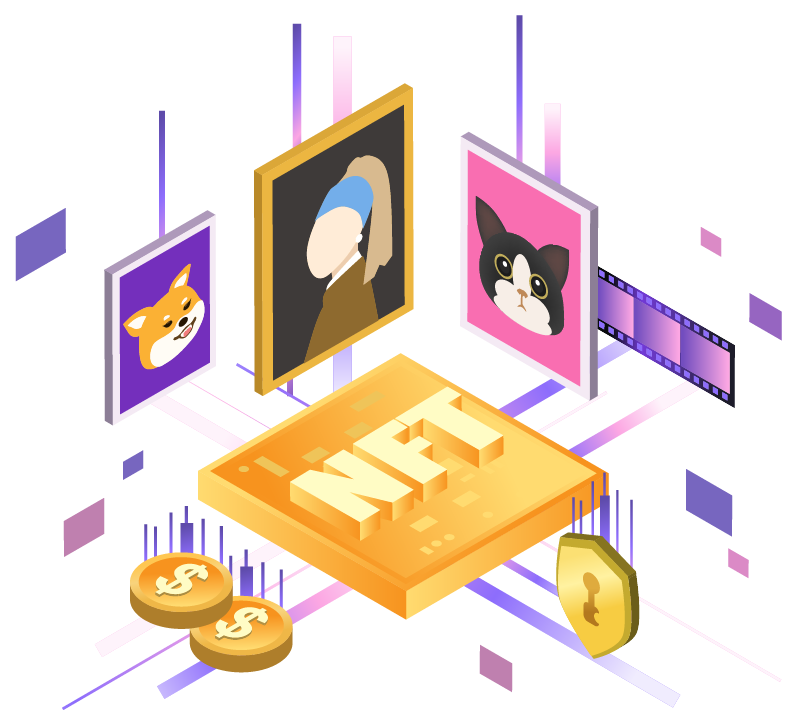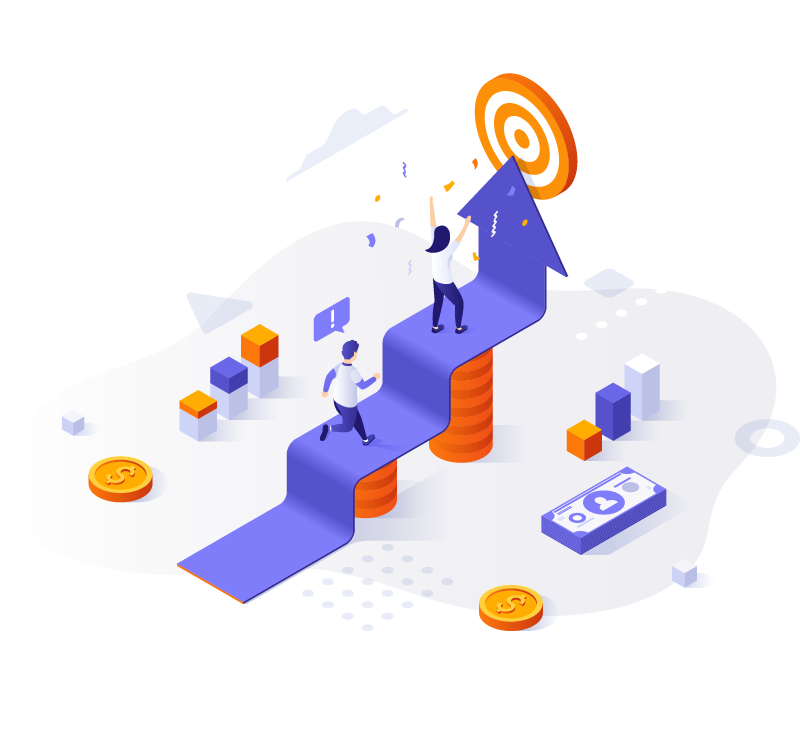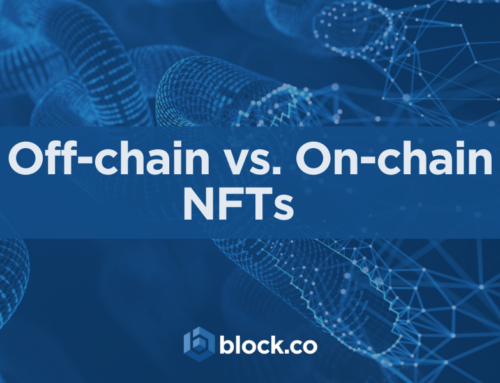Parallels between Two Disruptive Technologies: Internet & Blockchain – Part II

In part two of this blog, we will explore the parallels between the technologies in capitals and start-ups, in the decentralization of the blockchain as the main aspect that will revolutionize the Internet and in education. To read up on the first blog post, please follow this link.
Initial Start-Ups and Capitals
For more than 20 years the Internet was narrowed down to the usage of a few tech-savvy that knew how to navigate it. It is only in 1993-94 that it became mainstream when Marc Andreessen created the Mosaic browser while studying at the National Center for Supercomputing Applications (NCSA) and brought the Internet to the general public allowing them to navigate the web comfortably with a positive user-friendly experience.
For the first time, users could establish an active presence over the internet by loading their own documents, photos, sounds, video clips, and hypertext “links” to other documents. Navigation of the internet started to have meaning. Later on, Marc Andreessen was on the team that created Netscape, the Internet browser that reached 38 million users in eighteen months and IPO’d in record time, breaking records as far as company growth while becoming the first dot-com company. Silicon Valley and Wall Street jumped on the rapid success of Netscape and started the “Internet Big bang” with a new wave of tech startups trying to follow a similar path.
In the blockchain world, Bitcoin (2008) was the first application of the technology, the most disruptive, and its first wave of users, just like in the first internet era, was also more on the technical savvy side. Despite the significant injection of capital into the blockchain space, we have not had yet a killer app or project that could compare to Mosaic or Netscape.
If blockchain is a synonym of decentralization, so far the unicorns in the space are centralized companies with traditional business models like Coinbase, Binance which are centralized exchanges, and Bitmain, a privately owned company headquartered in Beijing, China that specializes in the design of application-specific integrated circuit chips for bitcoin mining. This is why we still believe to be in the early stages of the blockchain technological cycle similar to 1994 during the Internet Revolution, expecting more market cycles to happen in the upcoming years.
A look at the market capitalization of the two technologies highlights a notable difference: according to CBInsights, in the 1990s venture capitals injected in Internet startups were around $35.6 billion while so far we’ve seen no more than $6 billion flowing into the blockchain space. The good news is that the trend is moving up and the potential is to reach $10 trillion between Bitcoin and other cryptocurrencies combined.
Some Venture Capitals, like Node Capital, smelled early the potential of the tech and made their first investments in the industry in 2011. In 2018, there were more than 200 venture investments in blockchain and cryptocurrency companies, more than in all of 2011-2015 combined.
Digital Currency Group is one of the major investors in the space and has been extremely influential in blockchain since 2013. They started off with an investment of less than a million US dollars, in crypto payment processor BitPay. Since then they have invested close to $100 million in dozens of blockchain and cryptocurrency startups including Coinbase and Ripple.
So far with blockchain, we have mainly experienced consumer services improving in terms of efficiency and reliability but nothing that would make people think “blockchain has changed my life” like the Internet rightly claimed back then. While the widespread application of blockchain has been achieved in digital identity, supply chain, and management of digital assets, perhaps mass adoption of the tech will be less sudden than that of the internet but will have more solid grounds.
Decentralization, for the Internet too
The road to decentralization appears steep and full of hurdles. While the Internet started as an open-source and decentralized tool since no corporation or government-owned it, it soon became exploited by a few large, physical servers (a few large corporations) that are responsible for hosting essential elements of what we consider the internet.
The companies that own those servers have an enormous impact on how the internet runs while we give up the illusion of a free, democratic, and decentralized web.
What is the decentralized web or Dweb?
During the early days of the internet, people could actually communicate with each other without the need for a central company like Facebook or Google. Decentralizing the web simply means going back to the origin of how the internet was intended and promote a peer to peer communication again. In technical terms, it also means a shift in how information is stored and retrieved. While nowadays we use HTTP and HTTPS links to identify information on the web by location, this will be done by content instead, making it easier for websites and files to be stored and passed around from peer to peer (computer to computer) rather than having one single server as a receiver and transmitter of information.
The server that controls the location also controls access to the information thus establishing a monopolization that causes privacy and censorship issues many are fighting against, including Tim Berners Lee, inventor of the world wide web in 1989. He recently advocated for a renewed free and decentralized Internet as the only answer to personal privacy protection. Opening to a decentralized model is the only way to secure personal data against big corporations like Facebook or Amazon that will unlikely give up users’ information for commercial purposes. We would not bother with a decentralization of the Internet if it was not for the threat to our privacy we recently experienced with Cambridge Analytica and the revelations by Edward Snowden that opened the doors to a fierce debate on personal privacy. These recent events intensified the necessity of creating a Dweb and allow resources and funds to flow in academic and institutional research projects but its development is still appearing dormant and does not seem to be a major focus in technology research at the moment.
It will not make an appearance any time soon but blockchain might go to the rescue and create a decentralized version that would rely on a functional peer-to-peer distributed network built on a community of users without the need for a broker overseeing the process. This would also be a significant improvement over the hackable and crushable version of the internet we have now.
Education
A boost to mass adoption and education of the Internet was offered by AOL in the early 1990s promoting the use of a computer and later of the internet to the less tech-savvy early users. It started a massive campaign by sending educational CDs everywhere to teach people how to use them and saw its user base grow from 200K to 25M clients over the years. For many, this seemed to coincide with the widespread mass adoption of the Internet, with education playing a leading role in the process. (From Wikipedia “1991–2006: Internet age, Time Warner merger”)
In open blockchains, since there is not a central point of coordination, Bitcoin educational activities are voluntarily promoted by industry educators and scholars the caliber of Andreas Antonopoulos to Trace Mayer, to name a couple, that constantly provides free valuable content. They insist on how important it is to safeguard your own bitcoin wallet’s private key and learning how to do it requires much higher attention than when a company or a bank looks after all your financial movements.
In the decentralized world, users and consumers will have to stand on their own feet. It will be the time to take control over own finances, documentation, own digital identity while everything that currently requires a monitoring central entity will become obsolete. Education becomes the main tool to gain independence from third parties implying one wants to learn how to manage a new way of life. And this shift of mindset is one of the main challenges represented by blockchain technology.
Education is pivotal for blockchain in two ways:
A. An instrument for learning the benefits and how to use the technology.
Today the internet itself is helping educate people everywhere globally and blockchain benefits from it with online educational courses providing easy access to educational material and information. The first university in the world that offered a course and a master’s in digital currencies was the University of Nicosia, Cyprus. Nowadays blockchain is a subject of studies in major universities (MIT, Oxford, EdX) that offer both online and on-site courses.
B. Blockchain is actively used to store and manage data such as academic titles and digital identities in education institutions.
Blockchain as a distributed ledger for a secure network of transactions is finding wide adoption as is the case for academic and ID credentials embraced by the University of Nicosia and Block.co. The University of Nicosia and Block.co may provide the necessary technical expertise to follow the whole process from creation to publication on the blockchain where the document will be safely stored for life and where it can be independently verified by any third party. The University of Nicosia was the first one to do it globally as early as 2014.
If your brand is ready to take the step into web 3.0 and NFT marketing, to optimize engagement with your audience in innovative ways, then click the button below to get your Free Trial, a limited number of Free NFTs, and a Free Consultation call from our team!
For more info, contact Block.co directly or email at enquiries@block.co.
Tel +357 70007828
Get the latest from Block.co, like and follow us on social media:







